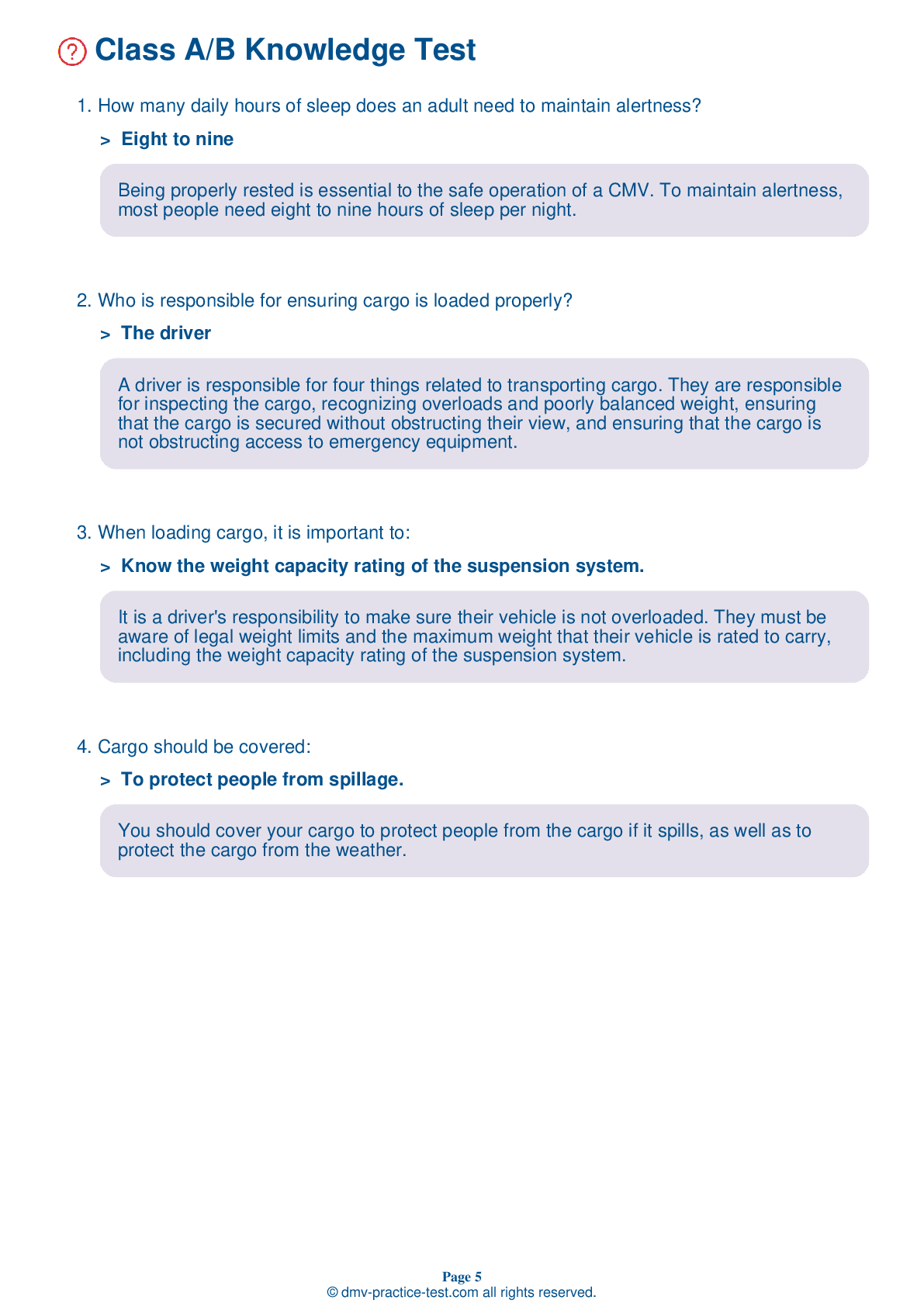Class A Driving Test | Nevada 2025 #2 Page 5 of 7
Train for FREE online with our Nevada class A license test. The official exam test consists of several obligatory parts, with all of them checking your knowledge of different blocks of road rules. If you need to obtain a NV CDL class A permit in 2025, practice as much as possible. Free sample tests published on our website will help you check and improve your knowledge and boost your grades. Please bear in mind that CDL class A requirements may vary from state to state.
29 . Improperly loaded cargo can:
Cargo must be properly loaded and secured to prevent it from falling or shifting dangerously. During a quick stop, improperly loaded cargo could injure or even kill the driver.
30 . In the event of an engine fire, you should not:
In the event of an engine fire, you should turn off the engine as soon as possible. Do not open the hood if you can avoid it. Shoot foam through the louvers or from the vehicle’s underside.
31 . Truck tractors with air brakes that were built on or after March 1, 1997 are equipped with:
Truck tractors with air brakes that were manufactured on or after March 1, 1997 are required to be equipped with Anti-Lock Braking Systems (ABS). ABS is required in any other type of vehicle with air brakes that was manufactured on or after March 1, 1998.
32 . When driving down a steep grade:
When driving down a steep grade, you should rely primarily on the braking effect of the engine to slow down. To prevent overheating, use your brakes only as a supplement to this slowing technique.
33 . Be sure that your wheel bearing/seals are:
During an inspection, ensure that the wheel bearing/seals are not leaking.
34 . The driver of a commercial motor vehicle:
It is prohibited for CMV drivers to use hand-held mobile phones while driving.
35 . Regarding winter driving, all of the following are true, except:
When driving during the winter, it is particularly important that your tires have adequate tread. You need a tread depth of at least 4/32 of an inch in every major groove on the front tires, and at least 2/32 of an inch on the back tires. Check the tread depths by using a gauge.
See the exact questions that will be on the 2025 Nevada DMV exam.
99.2% of people who use the cheat sheet pass the FIRST TIME
Lillian MCcranie explains how our CDL study guide was helpful in passing the exam and recommends it to everyone.
Cameron tells us how he purchased the CDL exam, and found it to be a useful tool which helped him pass the exam and find a job.



